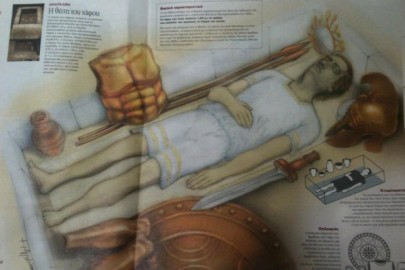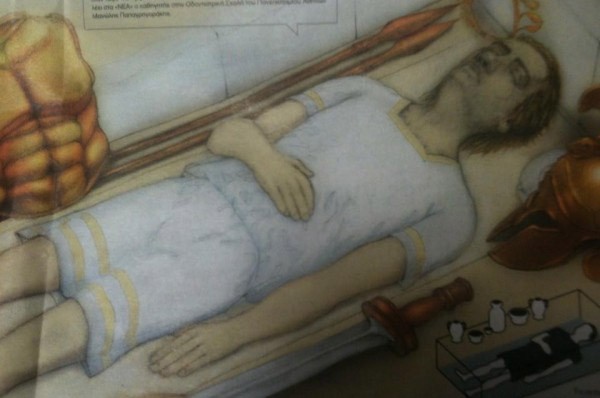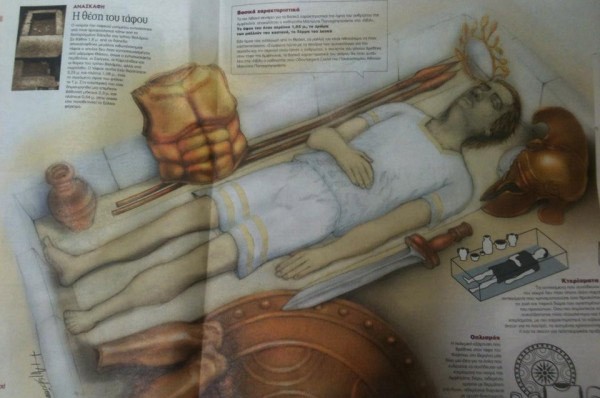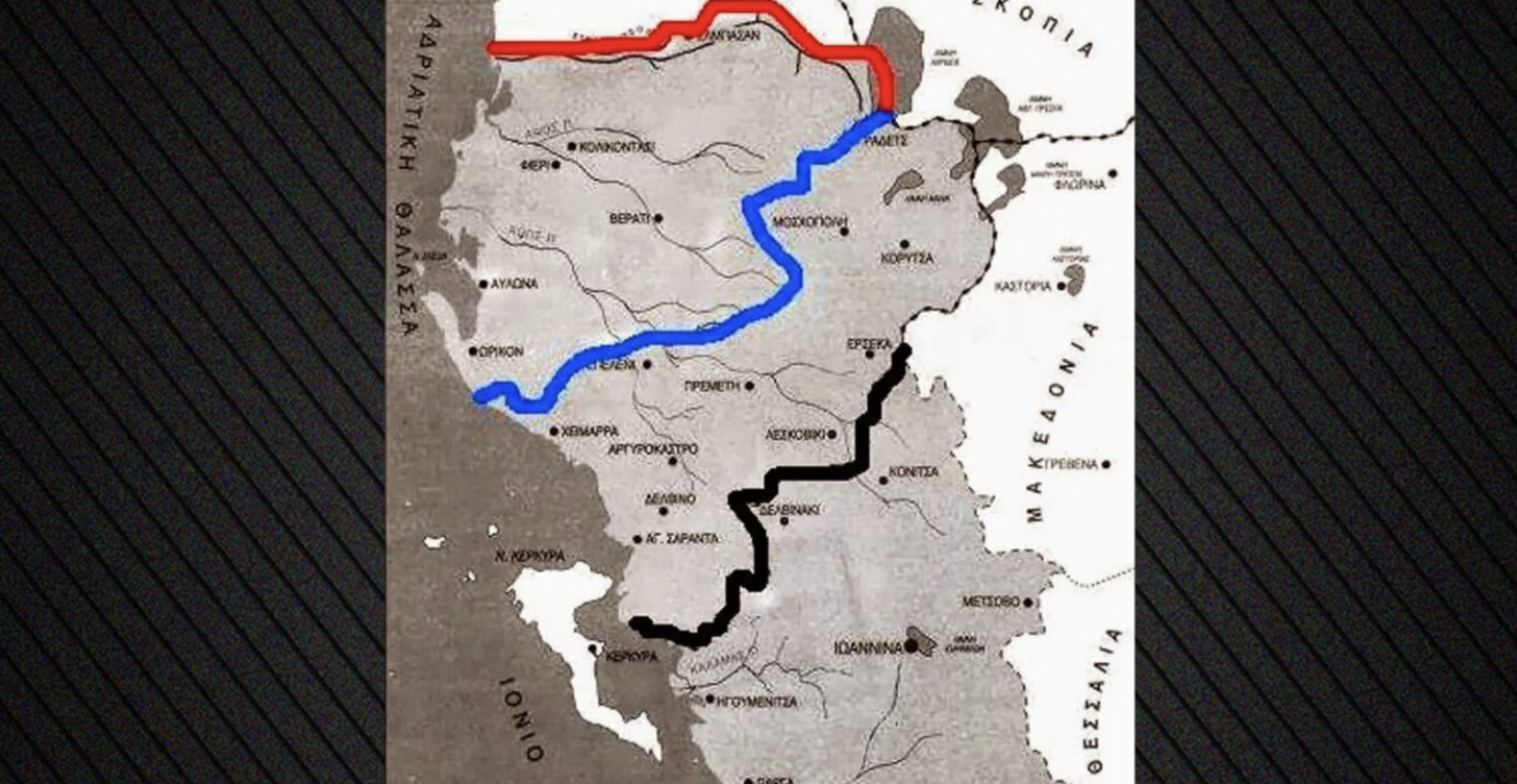In the months preceding the research now being done on the skeleton of the Amphipolis resident, archaeologists were able to reveal most of what the tomb had to show, including many items that could assist in identifying the Tomb resident’s identity and its dating. Artists attempt, now, to reconstruct the shape of the dead. Based on initial estimates of paleoanthropologists, dentists and specialists, with the assistance of sketch artists, they already attempted a first approximation, a first sketch of the deceased accompanied by possible scenarios of his appearance.
According to newspaper “Ta Nea”, the man published on the sketches was of moderate stature (1.65 meters), with white skin and brown or red hair.
Officially, this scenario will be proven or disproven in around six months! That’s the time needed until the specialized DNA labs in Manchester, England, will discover who the Amphipolis resident is. The key for this will be the comparison of genetic material from the tombs of Vergina but also corresponding material data banks in Egypt and Asian countries. Genetic material has been sent, since last August, to the Institute of Genetics and Biotechnology of Marnchester, belonging to the tomb of Philip II and the tomb of the Prince’s tomb in Vergina.
“If it turns out that there is a kinship of the Vergina dead with that of Amphipolis, it will reduce the list of candidate residents”, said an anthropologist to newspaper “Ethnos”.
Ask me anything
Explore related questions







